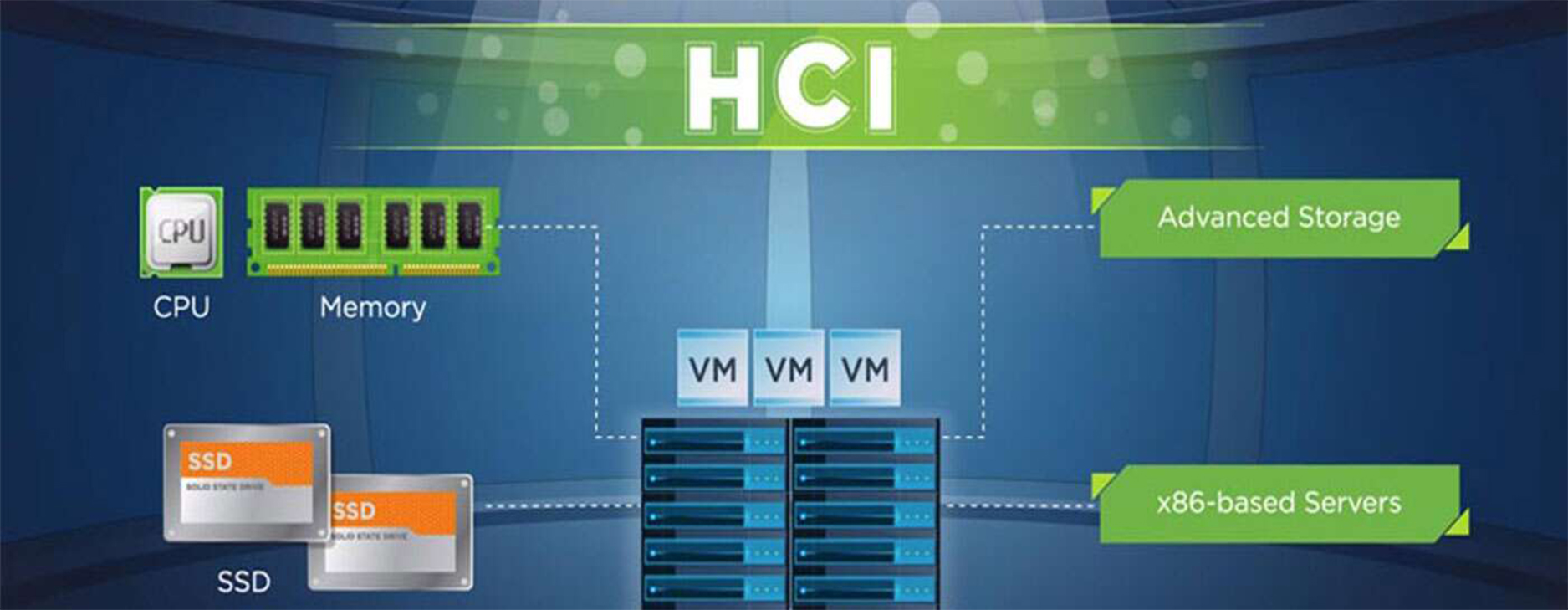
HYPER CONVERGED INFRASTRUCTURE
Hyperconverged infrastructure (HCI) is a software-defined, unified system that combines all the elements of a traditional data center: storage, compute, networking, and management. This integrated solution uses software and x86 servers to replace expensive, purpose-built hardware. With hyperconverged infrastructure, you’ll decrease data center complexity and increase scalability.
Hyper-Converged Infrastructure represents a new level of thinking about how IT organizations are approaching hardware. By switching away from an a la carte approach to a condensed single server design with a web-based single managed interface, IT organizations are able to increase flexibility and efficiency whilst lowering costs.
Traditional three-tier architecture is expensive to build, complex to operate, and difficult to scale. Don't wait on the IT infrastructure that can support your modern application demands. Adopt HCI without losing control, increasing costs, or compromising security. At the core of each offering is a powerful hyper-converged solution that offers a stable, fully scalable platform from which Advanced Intelligence Technologies (AI Technologies) build out cost-effective solutions that empower and enable your business. These environments are architected and validated to deliver the hosted IT solutions without impact or risk to your business.
How Does Hyperconverged Infrastructure Work?
Four tightly integrated software components make up a hyperconverged platform:
• Storage virtualization
• Compute virtualization
• Networking virtualization
• Advanced management capabilities including automation
The virtualization software abstracts and pools underlying resources, then dynamically allocates them to applications running in VMs or containers. Configuration is based on policies aligned with the applications, eliminating the need for complicated constructs like LUNs and volumes.
What Can You Do with HCI?
• Build a private cloud: Deploy cloud-like infrastructure on-premises with lower costs, more control, and improved security. Choose from multiple hardware possibilities from our certified partners.
• Extend to public cloud: Choose an as-a-service option from the largest HCI cloud ecosystem for faster speed of deployment and less time spent managing infrastructure.
• Achieve true hybrid cloud: Manage a mix of VM- and container-based applications, deployed across a mix of data center, public cloud and edge environments with VMware hybrid cloud.
Advantages of Hyperconvergence vs. Traditional, Three-Tier Architecture
HCI transforms the traditional IT operational model with simple, unified management of resources. This results in:
Increased IT Efficiency
Eliminate manual processes and the need for siloed operational expertise on your team. Now, a single, converged IT team can monitor and manage resources and improve storage capabilities. Plus, with HCI, IT resources are presented as pools of storage that can be dynamically allocated to deliver the right amount of capacity, performance, and protection.
Better Storage, Lower Cost
Reduce your CAPEX by using a scale-up/scale-out architecture that requires only industry-standard x86 servers, not expensive, purpose-built networking. Then simply add capacity as needed with no disruptions. With HCI, you avoid vendor lock-in and eliminate overprovisioning, meaning greatly reduced infrastructure spending across your data center.
Greater Ability to Scale
Be more responsive to rapidly changing business needs. Set up hardware in a few hours; spin up workloads in minutes. Accelerate the performance of business-critical applications like relational databases.
HCI scales better than traditional infrastructure. It enables a future-proof IT environment that allows you to scale up and scale out to easily meet specific application needs.